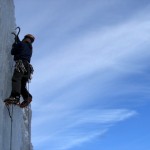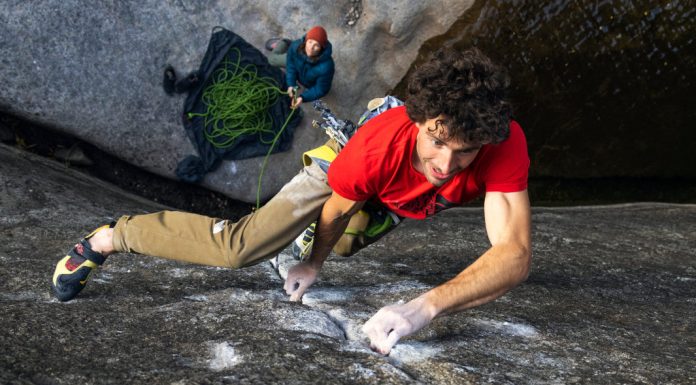by Dr Adam D. Sylvester, The University of Tennessee, USA A study in the US has found there is no greater risk of osteoarthritis in rock climbers compared to non climbers, contrary to previous theory.The study, published in the November issue of Journal of Anatomy, examined osteological changes in the hands and fingers of rock climbers that result from intense, long-term mechanical stress placed on these bones. Specifically, whether rock climbing leads to increased cortical bone thickness and joint changes associated with osteoarthritis. Researchers also wanted to identify whether climbing intensity and frequency of different styles of climbing influence changes.Adam Sylvester of the University of Tennessee explains: ?Radiographs of both hands were taken for each participant and were scored for radiographic signs of osteoarthritis using an atlas method. We compared 27 recreational rock climbers and 35 non-climbers for four measures of bone strength and dimensions and osteoarthritis. The results suggest that climbers are not at an increased risk of developing osteoarthritis compared with non-climbers.Climber?s finger and hand bones are, however, greater in cross-sectional area and total width, indicating that additional bone is being deposited on the external surface, not usually seen in adults. The strength of the finger and hand bones are correlated with styles of climbing that emphasize athletic difficulty. Significant predictors include the highest levels achieved in bouldering and sport climbing.?The research paper can be read online atthe Journal of Anatomy ( Source: Journal of Anatomy )
- Home
- News
- Videos
- Fotos
- Klettergebiete
- Unternehmen & Produkte
- Themen
- Themen beginnend mit 0-9
- Themen beginnend mit A
- Themen beginnend mit B
- Themen beginnend mit C
- Themen beginnend mit D
- Themen beginnend mit E
- Themen beginnend mit F
- Themen beginnend mit G
- Themen beginnend mit H
- Themen beginnend mit I
- Themen beginnend mit J
- Themen beginnend mit K
- Themen beginnend mit L
- Themen beginnend mit M
- Themen beginnend mit N
- Themen beginnend mit O
- Themen beginnend mit P
- Themen beginnend mit Q
- Themen beginnend mit R
- Themen beginnend mit S
- Themen beginnend mit T
- Themen beginnend mit U
- Themen beginnend mit V
- Themen beginnend mit W
- Themen beginnend mit X
- Themen beginnend mit Y
- Themen beginnend mit Z
- Routendatenbank
Climbing.de ist eine der ältesten deutschsprachigen Bergsportseiten im Internet.
Seit 1998 präsentiert Inhaber Martin Joisten, dessen Texte und Bilder in zahlreichen nationalen und internationalen Publikationen zu finden sind, aktuelle Informationen aus der Welt des Bergsports.
Seit 1998 präsentiert Inhaber Martin Joisten, dessen Texte und Bilder in zahlreichen nationalen und internationalen Publikationen zu finden sind, aktuelle Informationen aus der Welt des Bergsports.
Kontaktieren Sie uns: info@climbing.de
© Copyright 1998 - 2022 Climbing.de by Martin Joisten


![[VIDEO] Alexander Megos: URSUS | The days after the send URSUS | The days after the send (c) Alexander Megos](https://www.climbing.de/wp-content/uploads/2024/03/youtube_WCZVR9-tZTc-218x150.jpg)

![[VIDEO] Stefano Ghisolfi: ALL my secrets about ENDURANCE Stefano Ghisolfi: ALL my secrets about ENDURANCE (c) Stefano Ghisolfi](https://www.climbing.de/wp-content/uploads/2024/03/youtube_xlQ2OreHL60-218x150.jpg)
![[VIDEO] THE FULL JOURNEY 9B FA by Alexander Megos THE FULL JOURNEY 9B FA by Alexander Megos (c) Alexander Megos](https://www.climbing.de/wp-content/uploads/2022/12/youtube_QwjykRehg7M-218x150.jpg)
![[VIDEO] MEGATRON V17 MEGATRON V17 (c) mellow](https://www.climbing.de/wp-content/uploads/2022/12/youtube_f_MniTA8MYU-218x150.jpg)
![[VIDEO] Moulin Rouge (7b) Free Solo | Jonas Hainz Moulin Rouge - Free Solo (c) Jonas Hainz](https://www.climbing.de/wp-content/uploads/2022/10/youtube_UQs4KNRBHss-218x150.jpg)
![[VIDEO] Allez!](https://www.climbing.de/wp-content/uploads/2014/12/vimeo_30708796-150x150.jpg)
![[VIDEO] Patrick Edlinger: Opera Vertical - Teil 2](https://www.climbing.de/wp-content/uploads/2014/12/youtube_QPbfqKFFuQs-150x150.jpg)










